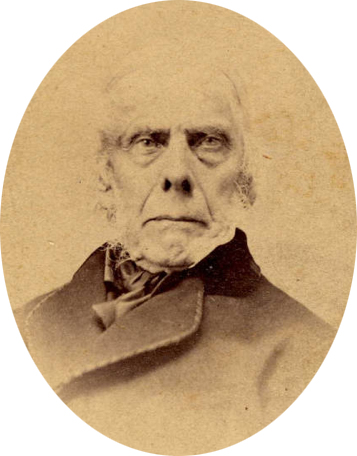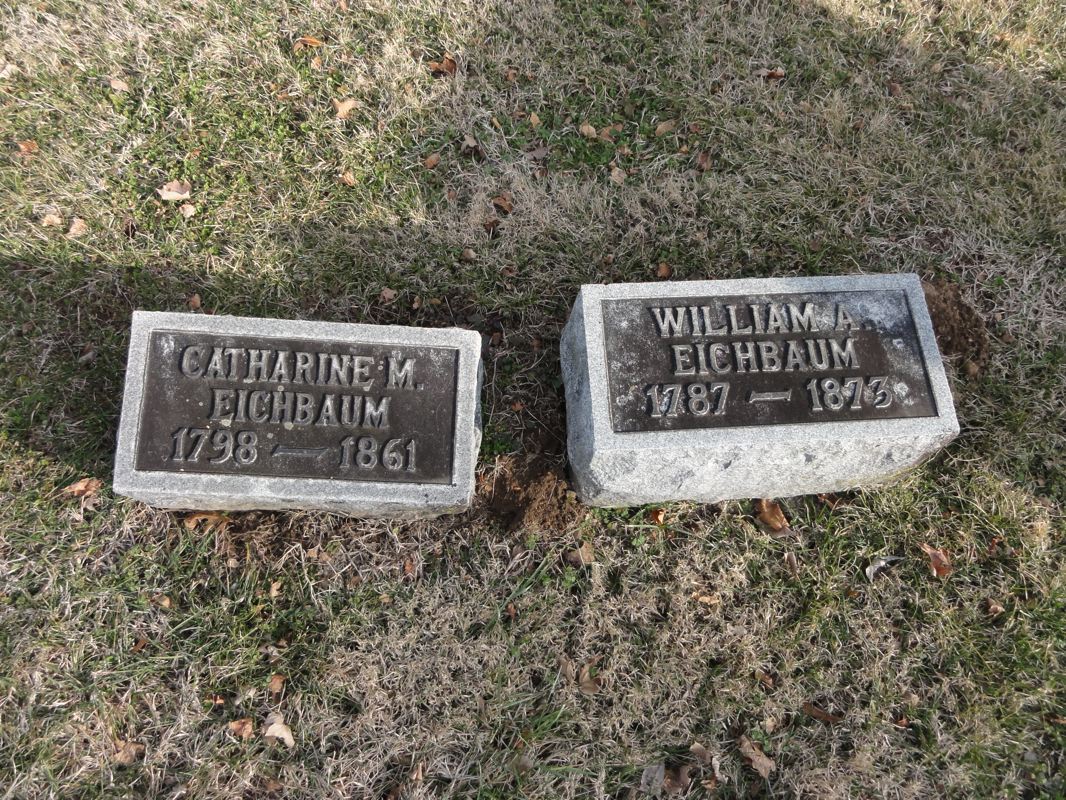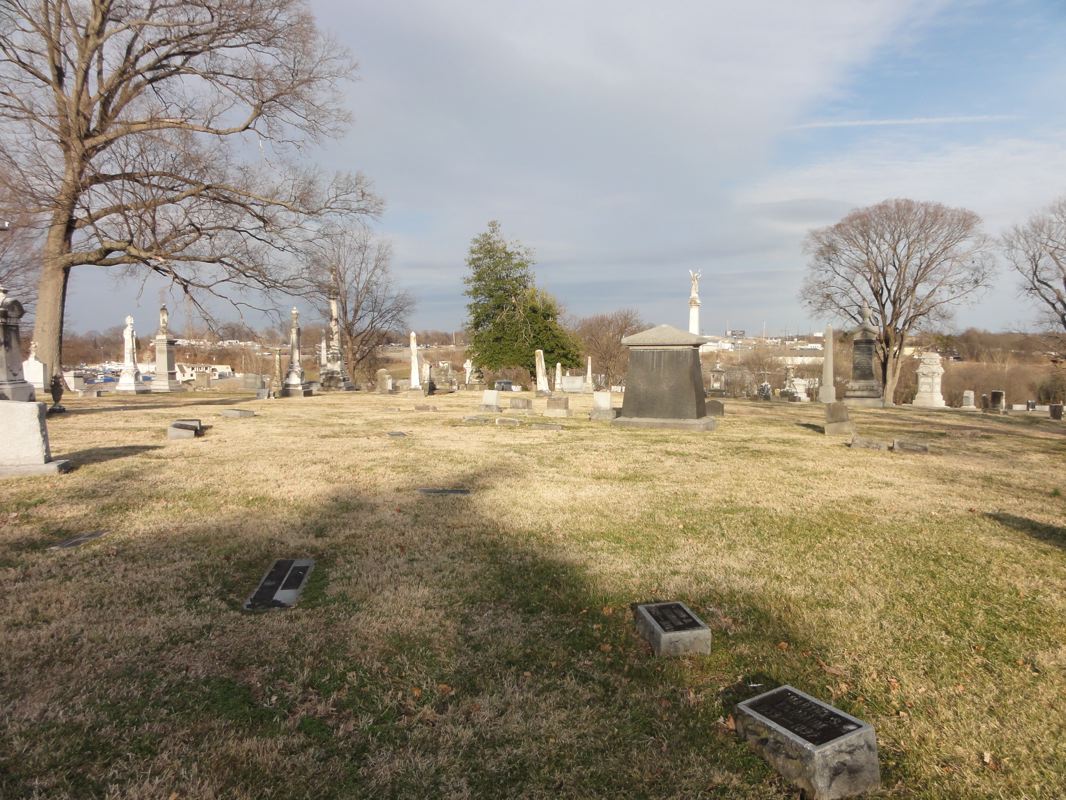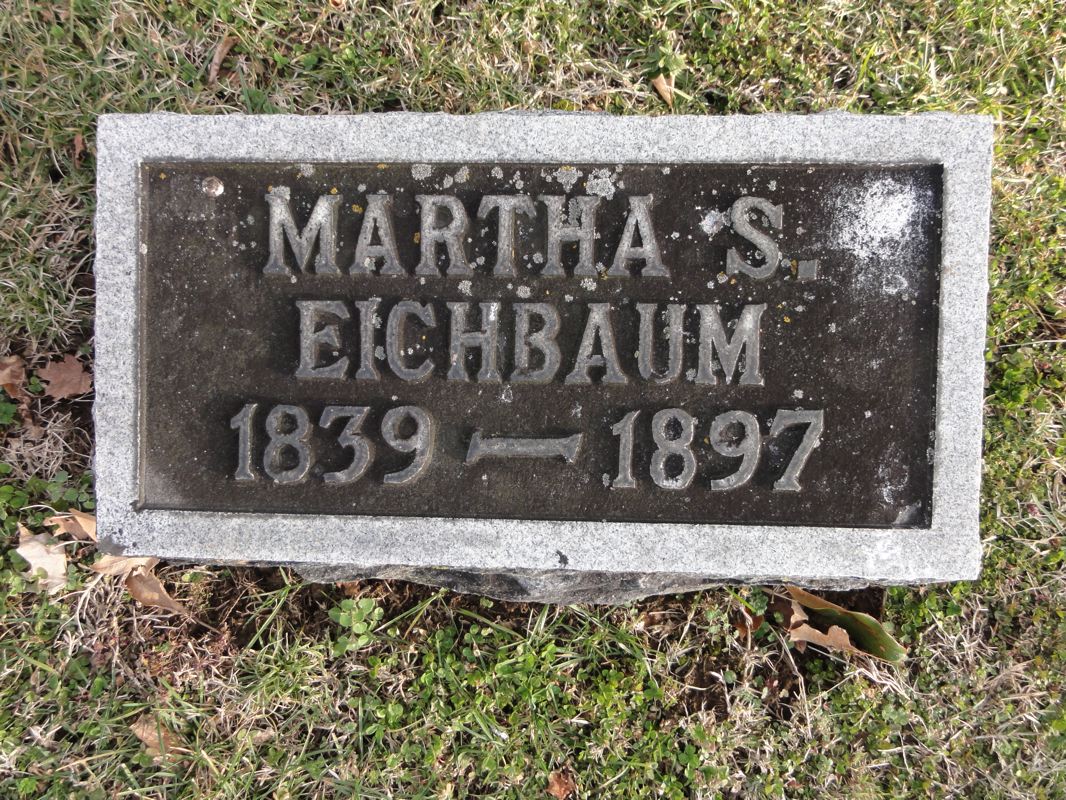John D. Eichbaum
1825-1898
[need picture]
![]()
The subject of this sketch was born in Nashville, Davidson County, Tennessee, December 9, 1825. His parents were William and Catherine Eichbaum. William A. Eichbaum (1787-1873) came to this country from Dublin, Ireland as a very young lad around the turn of the 19th century. As a young man he came to Nashville, Davidson County, Tennessee as a saddler by trade. Not long after his arrival he began a bookselling business. According the book, “Old Nashville Families,” W.A. Eichbaum built the first brick house on Vine Street in Nashville. He married Catherine M. Stearns (1798-1861) of Massachusetts, a teacher in the Nashville Female Academy, on January 6, 1825 as recording in the Tennessee State Marriage Book. John was the oldest of three children. His sister Mary was born in 1828. Then, his brother William was born in 1830. John had another brother, Stearns, who died in November, 1856, age 18. Four sisters: Eliza, died as an infant before 1832, Adaline, died March 1846, another Eliza, 1832-1902, who married Rufus Blackman and left a large family. Her obit is in the Gospel Advocate, June 05, 1902. And one other sister, Catherine, “Kitty”, married Randall Weber. Stearns, Eliza I, and Adaline were all first buried at Nashville City Cemetery, but all moved to Mt. Olivet.
John’s father was a leader in the city of Nashville. Besides being the chief book and stationer in the city, he had a great admiration for history and the preservation of it. In 1849, he was one of the founding fathers of the Nashville Historical Society. He was listed as filling the office of treasurer for the first ten years of its existence, (1849-1859). He was a lover of architecture. The Nashville Public Library Archives holds a scrapbook that was made by W.A. Eichbaum. In it are beautiful hand drawn sketches of some of Nashville’s earliest architecture, including maps of the city. There are drawings of banks, church buildings, the state capital building, including a drawing of the first building of the Christian church in Nashville. All of these have been preserved. Digital scans are available on the Nashville Digital Libary.
William and Catherine were faithful members and leaders in the Christian church in Nashville in its earliest years. He organized the first Sunday school program in the church of Christ in Nashville October 16, 1831, and later served as clerk of the church (Church of Christ in Nashville, GA 1977, 09.01.1977, p.552). Being a bookseller, he became an agent for the distribution of Alexander Campbell’s journal, the Millennial Harbinger, (MH, 1846, p.377 & 1848, p.473). He was a close friend of Campbell’s. In the February 1855 edition of the Millennial Harbinger, Campbell reported that on his eight-day visit to Nashville to quell the false teachings of Jesse B. Ferguson, he had only two opportunities to visit in the homes of the brethren. The W.A. Eichbaum family were recipients of one of those visits. (MH, 1855, p.107) John’s father lived until late in his 85th year, dying January 1, 1873.
John attended the University of Nashville. Upon graduation, he assisted Tolbert Fanning in Franklin College as a teacher. The 1846 register showed that John was professor of Languages, (Franklin College and its Influences, page 224).
Before the age of twenty, John began preaching the gospel. He travelled with Tolbert Fanning on trips and tours of different areas preaching and teaching. He and J.J. Trott were selected as Tennessee state evangelists for three years beginning in 1848. He served on
the Board of Directors of the Christian Evangelizing Association of Tennessee for 1852 and 1853. Reports of his work in Kentucky, South Carolina, Georgia, Alabama, and Tennessee, appeared in the pages of the Gospel Advocate. He planted the church in Jackson, Tennessee and preached regularly throughout the hills of south central and east Tennessee. His name is inscribed in granite among many others great names of preachers who often preached at the Old Philadelphia Meetinghouse in Viola, Tennessee.
John Eichbaum shared his father’s love for the printed page. In 1846, Tolbert Fanning began a journal called The Naturalist. John had not long previous joined the staff of Franklin College. The paper was meant to be devoted to science, agriculture, and knowledge. John became editor of the Literary Department. In the paper he would review current books of importance. He would include articles on such items as Affinities of Language, Egyptian Hieroglyphics, and the Origin of the English Language. He would contribute articles in the Science section on the geology of Palestine, the Egyptian delta, and fossils and geology in Tennessee.
In the late 1840s John became enamored, as did so many, at the influence of Jesse B. Ferguson. When Ferguson took over Tolbert Fanning’s paper, The Christian Review (1844-1847) in 1848, he changed the name to The Christian Magazine (January 1848-December 1853). John served as associated editor between 1850 and 1851. When the April 1852 issue came out with a feature article teaching the possibility of repentance after death, it lit a firestorm that ultimately led to Ferguson’s departure from churches of Christ. His demise took its toll on Eichbaum, as well as many other Christians, including another young preacher by the name of David Lipscomb.
John’s love for the truth never kept him long from what he enjoyed most, preaching the gospel. For years he was a confirmed bachelor, ever committed to the work of the Lord. However, in his 52nd year, he wedded Martha S. Grigg, June 20, 1877. Late in life he became the father of two girls who would later attend Nashville Bible School. His Martha passed away about a year before his departure on March 26, 1897. James A. Harding preached her funeral, and she was buried next to her mother-in-law in the family plot at Mount Olivet Cemetery in Nashville (See GA Obituary below). A little over a year later the seventy-four year old preacher followed his wife into the eternal realm June 4, 1898.
Robert H. Boll, a fellow student with the daughters of John and Martha Eichbaum at Nashville Bible School (now Lipscomb University), wrote an article on John’s life that appeared in a journal edited by James A. Harding called The Way. In it was a good description of the man. He was described as being of, “small stature, dark-complexion, quick and fiery in his movements, and a great walker. Often did he walk all day long to get to some poor little backwoods schoolhouse to preach to the eager crowds that assembled there to hear him." (The Way, 05.20.1899, p.74-76.) The article went on to explain that he had a unique way of speaking. The fuller text of the article is available below.
John D. Eichbaum was a great force for the Kingdom of Christ in the early years of the Restoration Movement. It is a pleasure to have this site dedicated to his life and work.
Sources - Much of the source information in this sketch is mentioned in the text. However, other sites on the web as well as information from the Gospel Advocate, Millennial Harbinger, Franklin College and its Influences, etc. were sited in its preparation. Additional information on John's siblings was provided in an email on 1.24.2014 by Carol Kaplan, part-time researcher at the Disciples of Christ Historical Society, and retiree from the Nashville Public Library's Nashville Room.
Note: The Eichbaum plot has been somewhat elusive until very recently, namely December, 2010. The first time I saw Eichbaum's name was while visiting Old Philadelphia Meetinghouse a number of years ago. His name appeared among a most impressive list of preachers engraved in a marker in front of the meetinghouse. The odd thing is that I had been driving right past his family plot for years when taking tours through Mount Olivet Cemetery. The hearse lane that goes up into section one, leading to the Jesse B. Ferguson plot, passes by the Eichbaum plot. It just proves that you never know where to look until you know where to look!
-Scott Harp
![]()

William A. Eichbaum
Father of John D. Eichbaum
Courtesy of Nashville Digital Libary
![]()

Millennial Harbinger 1855, page 107
Alexander Campbell's Visit to Nashville Home Of W.A. Eichbaum
![]()

Millennial Harbinger 1853, page 56
![]()

Millennial Harbinger 1853, page 714
![]()

. . .

Meeting Of Tennessee Evangelizing Association
April 21, 1852
From Voice Of Pioneers On Instrumental Music and the Societies, by John T. Lewis, Chapter 11, pages 86, 87
![]()
Gospel Advocate Obituary of Martha Eichbaum
Departed this life at her home in Nashville, Tenn., March 26, 1897, Mrs. Martha S. Eichbaum. Mrs. Eichbaum was the only daughter of Jesse and Mary Grigg, and was born in Wilson County, Tenn., July 19, 1839. She obeyed the gospel of Christ in her youth, and was baptized by Elder James J. Trott. She had nine brothers, all of whom lived to be grown, except one. On June 20, 1877, she was married to Elder John D. Eichbaum, and was the mother of two daughters, both of whom, with their father, survive her, and mourn their loss. It is said Sister Martha, at the age of thirteen, assumed all the labor and responsibility of housekeeper in her father’s family, her mother being much of the time an invalid. To spin and weave, cut and sow for the family were among her duties. Her neighbors and relatives bear witness to her industry and faithfulness in the performance of all her tasks. Her piety and devotion to Christianity were undoubted, and her kindness to friends and neighbors was very sincere. In her last years she was imbued with almost unbounded love for her husband and children. To live for them was the only wish she expressed. Her husband, who is so well known to the brotherhood, was absent at the time of her death, which was very unexpected by every one. The best of physicians could give only very temporary relief. A throat affection of a dropsical nature caused her death. Sister Eichbaum was much beloved by those who knew her. In becoming the wife of Brother John D. Eichbaum, she cheerfully made every sacrifice which such a position, a preacher’s wife, usually involves. The eternal outlook for her and others like her, however, is very bright. We call them dead, but “all live unto Him.” Her love for her daughters should be to them as the odor of sweetest flowers. A mother’s love is the only love which, though it appreciates the smallest attention, demands no requital. Let it bear precious fruit in their lives. Brother James A. Harding preached a very comforting and appropriate sermon before her burial, which took place at Mount Olivet.
-Granville Lipscomb, Gospel Advocate, April 29, 1897, page 272.
![]()
A Sketch From The Life Of J. D. Eichbaum
Not long ago it was my good fortune to meet with an old brother that had been personally acquainted with some of the old pioneer preachers. He related to me stories and experiences of the days when for the first time in his country the pure gospel was preached to sinners; how wonder and enthusiasm and joy followed in its wake; how indignation and hatred, falsehood and slander, pursued its bold heroes.
"Do you know anything about Brother Eichbaum?" he asked me one day.
"Brother J. D. Eichbaum? Yes, I knew him well. He died last year."
"So he is dead. I knew him many years ago, and heard him preach often in our neighbourhood. Brother Eichbaum was a great man in his way.
"He was of small stature, dark-complexion, quick and fiery in his movements, and a great walker. Often did he walk all day long to get to some poor little backwoods schoolhouse to preach to the eager crowds that assembled there to hear him.
"His memory was very fine. One day -- I was teaching at ____, Tenn., at the time -- he came to me and asked me for the keys of the library. He looked over the books and after a while returned the keys. A week or two after there pulled up a wagon, and two large boxes /75/ were put off. The wagoner knew nothing of who it was that had sent them; he only knew he had received orders to carry the two boxes of books to the ____ school, and that he had been paid. The boxes stayed there for a week. Then Brother Eichbaum called again.
" 'Why didn't you put these books in the library?' he asked.
" 'I didn't know they belonged there.'
" 'Why, I sent them out myself,' said Brother Eichbaum. `You remember, I went into the library. I looked over the titles of your books there, and I have sent you two hundred others.
"He didn't send any book we already had.
"He delighted greatly in taking long walks, even when he was holding meetings. Often did he start out after an early breakfast and walk till time for the forenoon sermon, which meant from six to ten miles, if not more; but he was always punctual. Though people often knew not where he was when they started to the meetinghouse, they always found him promptly at his post when time came for preaching. He had taken a long morning walk one day while holding a meeting in our neighborhood, and was hurrying back, to his appointment, when by the road he saw a man cutting wheat.
" 'Going to preaching?' he shouted to the man.
" 'Waal, yes, I'd sure like to go,' answered the man, wiping his face with a red bandanna. `They tell me that little feller from town is jes' a-tearin' up stumps over there. I'd like mighty well to hear him. Air you a-goin'?'
" 'Yes, I am going. Put up your cradle and let us go together,' answered Brother Eichbaum.
" 'Can't do it. I've got to cut this `ere wheat first. It's jes' a little patch, but I can't get it done by time to go to church.'
" 'Well, I'll help you. Got another cradle?'
" The man got another cradle and Brother Eichbaum hopped over the fence. The two toiled together till the wheat was cut. Then the farmer went to the house, washed, and put on a clean shirt, and they were off.
"As they entered the meetinghouse, the man, still unsuspecting, followed Brother Eichbaum into the house, where the congregation had already assembled and were singing, walked up to the front behind him, and it was not until he saw Brother Eichbaum step up on the platform that it dawned upon him who his companion was. He turned aside and took the nearest seat, the first time, probably, that he had sat in the "amen corner" in his life. During that meeting the old fellow became interested and obeyed the gospel.
"Brother Eichbaum was wonderfully eloquent. When he first began his sermons his eyes were cast down, he seemed timid and nervous. For a while his remarks were dry and tiresome; the audience thought they would be bored. Suddenly his eyes lighted up, a flush came over his face, and from that moment unsurpassed eloquence poured from his lips and thrilled to their innermost depths the hearts of the spellbound hearers. Many a sinful soul trembled as he thus reasoned of righteousness and temperance and judgment to come; many a sinner saw for the first time the horror of his condition; many a sectarian, the error of his way.
"A strange thing, the like of which never before or since has come under my notice, happened during one of his meetings. He had been preaching for about an hour in his wonderful strain, and the sermon was nearing its close. He stepped off the rostrum and approached the audience during the exhortation. He walked halfway down the aisle, still speaking, when, unconsciously, the whole congregation rose to their feet, left their seats, and clustered around him, and he stood in the midst of the throng and talked to them, I know not how long. I was in the crowd, and when he ceased I found myself close to him. How I got there I can't say."
Thus spoke the brother. I sat and meditated. It is not necessary, I thought, that a man should be eloquent in order to do the best of preaching. Some men are eloquent; some, apt to teach. Some have power to do good one way; some, another. Our bodies and spirits belong to God. Let every man use his talents, be they few or many, little or great; for God hath set every member into the body; some are feet, some hands, some eye, some tongue; and the weak ones are worthy of double honor. This man preached the gospel, and preached it well. His powers belonged to God and were used in his service.
I thought of him as he was in the zenith of his glory, and the light of his talents shone forth undimmed in the work of his Master. What power for good he must have had! How he must have been loved and exalted by them that knew him!
Again, there came before my mind the picture of an old, gray-headed man; poor and lonely, his mind shattered, the brightness of his eye faded. No longer sat eloquence enthroned on his lips, and men had forgotten the burning /76/ words that had fallen thence. And as I sighed, my eyes fell upon the western sky, where the sun, though bright at noon, had now sunk behind dark masses of somber, purple-bordered cloud. That was the picture of Brother Eichbaum's life.
And a bright thought: There dwells a God beyond that looks at the sun from the other side, where gloom and cloud cannot hide its glory; and we hope and trust that God's eye delighted in our brother's last years as he did in his early days, when in strength and vigor he labored. May he rest in peace and his memory be blessed.
-by Robert H. Boll, The Way, May 20, 1899, pages 74-76
![]()
Directions To The Eichbaum Family Plot
William A., Catherine, John, Martha and other members of the Eichbaum family are buried in Section 1 of Mount Olivet Cemetery on Lebanon Pike in Nashville, Tennessee. See map here!
Grave Location
Section 1, Lot 166, Spaces 19-M.E. & 20-J.D.
GPS Location
36°09'04.0"N 86°44'02.9"W
or D.d. 36.151120, -86.734137
![]()
The Eichbaum Family Plot
The Eichbaum Family Plot
The Eichbaum Family Plot
Catherine M. Eichbaum 1798-1861
William A. Eichbaum 1787-1873
(Early Elder of the church in Nashville &
the parents of John D. Eichbaum)
Looking out toward Nashville from John & Martha Eichbaum's plot
Note the tallest grave marker in distance (right center) as that of Jesse B. Ferguson
Martha S. Eichbaum
1839-1897
John D. Eichbaum
1825-1898
![]()







